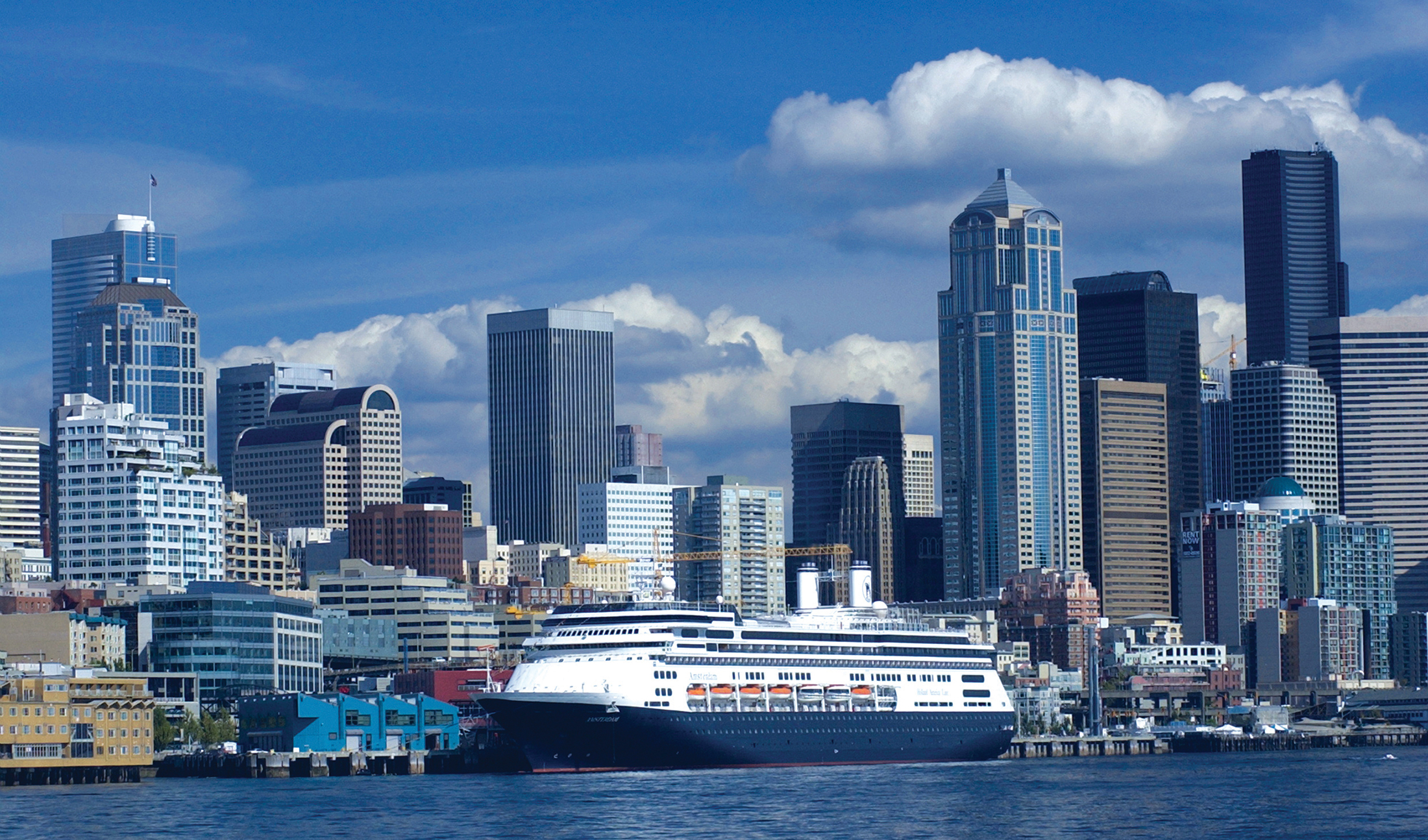Environmentally responsible travel
Companies in the cruise industry are using greater numbers of innovative methods to reduce their environmental impacts. The wide and deep proliferation of such techniques proves that outstanding travel experiences can be enjoyed while maintaining healthy oceans and seas. This is a triple win – for the planet, for travellers and for the companies – demonstrating that environmentally responsible travel is not just a back-page policy but a deeply ingrained ethos.
The tourism industry recognises its responsibility to contribute to global greenhouse gas emission reduction
Being eco-friendly and travelling is something of a paradox; whether you’re driving, flying or cruising, any means of transportation while traveling will produce CO2 emissions. The tourism industry recognises its responsibility to contribute to global greenhouse gas emission reduction. This is why environmentally responsible travel is important for both companies and people planning their next vacations.
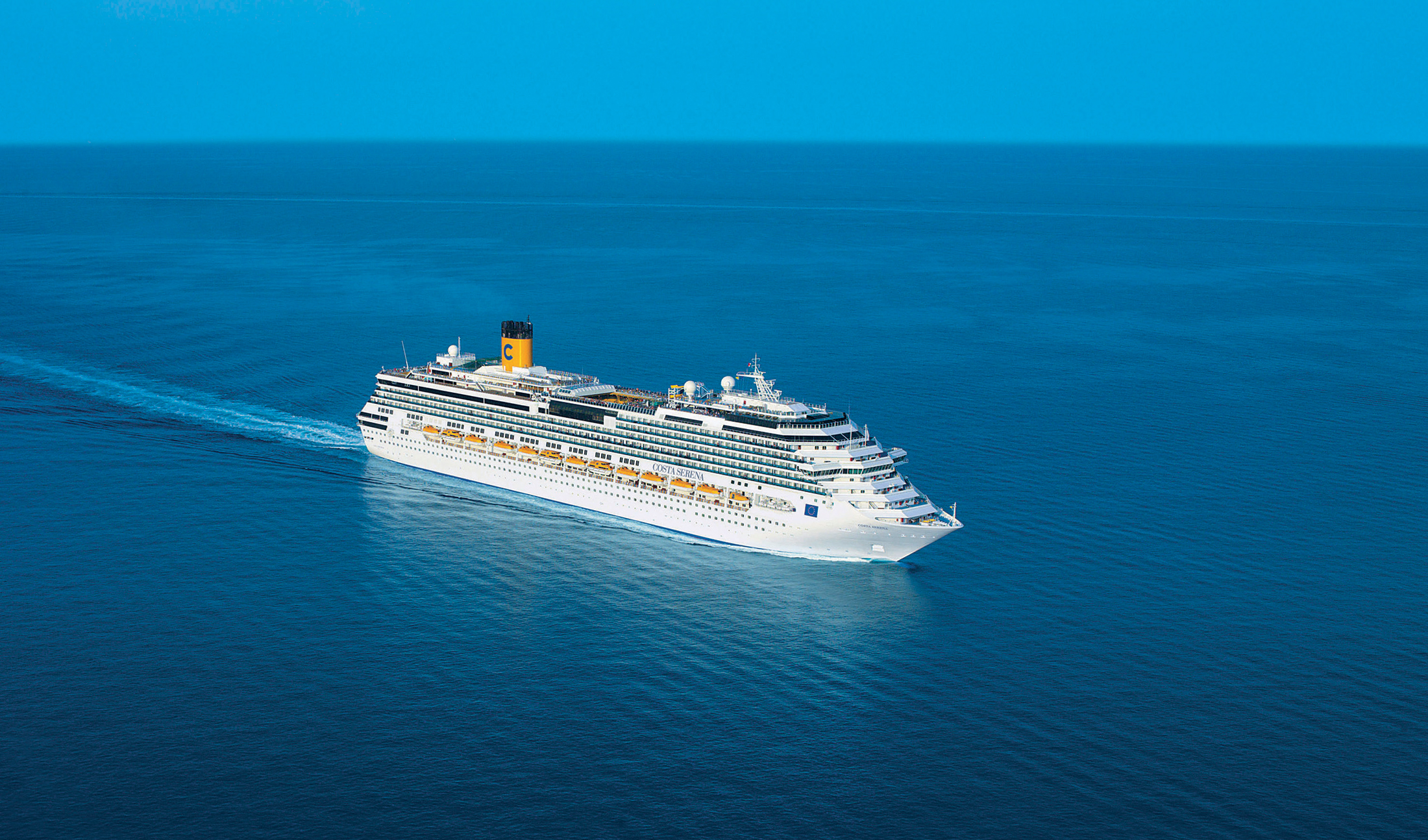
Protecting the world’s oceans is essential to the survival of the cruise industry, which is why many companies such as Carnival Corporation have invested in eco-friendly initiatives. The company’s Costa Serena cruise ship, run by Costa Cruises, is pictured above
Cruise control
21m
Number of people who went on a cruise in 2013
10m
Number of people who sailed with Carnival in 2013
Comfort, affordability and trust are things to think about before travelling. These components are provided in abundance by environmentally responsible travel companies like Carnival Corporation & plc, which serves its guests with talented, passionate and dedicated staff.
Carnival Corporation is the world’s largest cruise company, with nine industry-leading global brands. Carnival Corporation’s management and staff, both shipboard and shoreside, are key to improving environmentally responsible travel. The company has established its own policies and guidelines for environmental protection, which often exceed international regulatory mandates. All of Carnival Corporation’s ships also have an onboard environmental officer (EO) who ensures that the ship meets all company and regulatory environmental requirements. Passengers interested in how cruise ships benefit environmentally responsible travel can speak to EOs, who are more than happy to educate guests on such matters.
Over 21 million passengers went on a cruise in 2013 – with over 10 million choosing to sail with Carnival Corporation’s brands. The plurality of choice is tremendous but one of the most important things to focus on for a cruise is the destination. Looking at what the ship offers, Carnival Corporation cruises can suit every conceivable taste, price range and target market, and are rapidly growing in popularity thanks to the variety of options for destinations, length and ship offerings. To add to this, desires of different cultures are met with multilingual staff who can recommend suitable entertainment and vacation needs, and tailored onboard offerings that appeal to all different kinds of travellers.
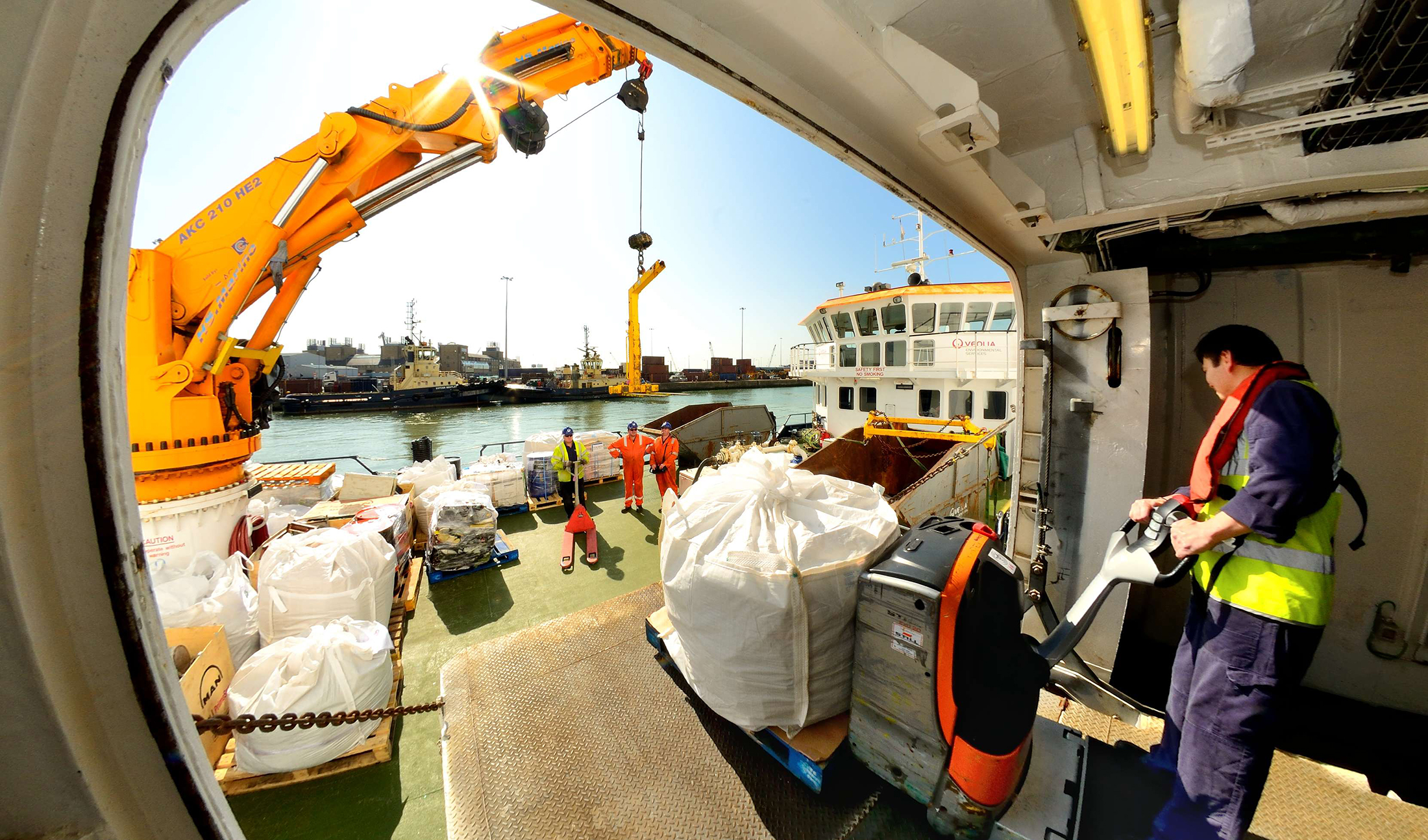
Carnival Corporation recognises waste management as one of the most important ways in which it can promote environmentally responsible travel. All of Carnival’s ships have a waste management plan that specifies how each type of waste is managed onboard
Best in the business
100,000
Number of Carnival employees
9
Number of Carnival brands
Carnival Corporation has over 100,000 employees and boasts the most widely recognisable portfolio of holiday vessels. There are nine brands under the Carnival Corporation umbrella, including popular ones in the US, the UK, Germany, Italy and Australia. Among these are AIDA Cruises, Carnival Cruise Lines, Costa Cruises, Cunard Line, Holland America Line, P&O Cruises UK, P&O Cruises Australia, Princess Cruises and Seabourn. The 101-strong fleet accounts for over 20 percent of all cruise liners, according to Cruise Market Watch. Staff are passionate about environmentally responsible travel, and Carnival Corporation has a department dedicated to maritime policy and raising the bar of environmental leadership in the industry.
This year Carnival Corporation will likely surpass its target of reducing the rate of greenhouse gas emissions on its ships by 20 percent, well ahead of its own environmentally responsible travel targets. Increasing environmental sustainability is one of its most important corporate leadership plans. Its nine global brands collectively pursue aggressive energy reduction and conservation initiatives, many of which are more rigorous than most international laws and regulations. In 2007 the company launched a long-term strategy to annually improve energy efficiency and reduce overall fuel consumption to reduce its environmental impact. “At Carnival Corporation we believe that sustainability is about preserving our environment, respecting our employees and communities and returning value to our shareholders,” said Bill Burke, Chief Maritime Officer for Carnival Corporation. “For us, sustainability is a core part of how we conduct business. We continue to make major progress and are committed to maintaining our leadership in sustainability and setting industry standards for corporate citizenship.”
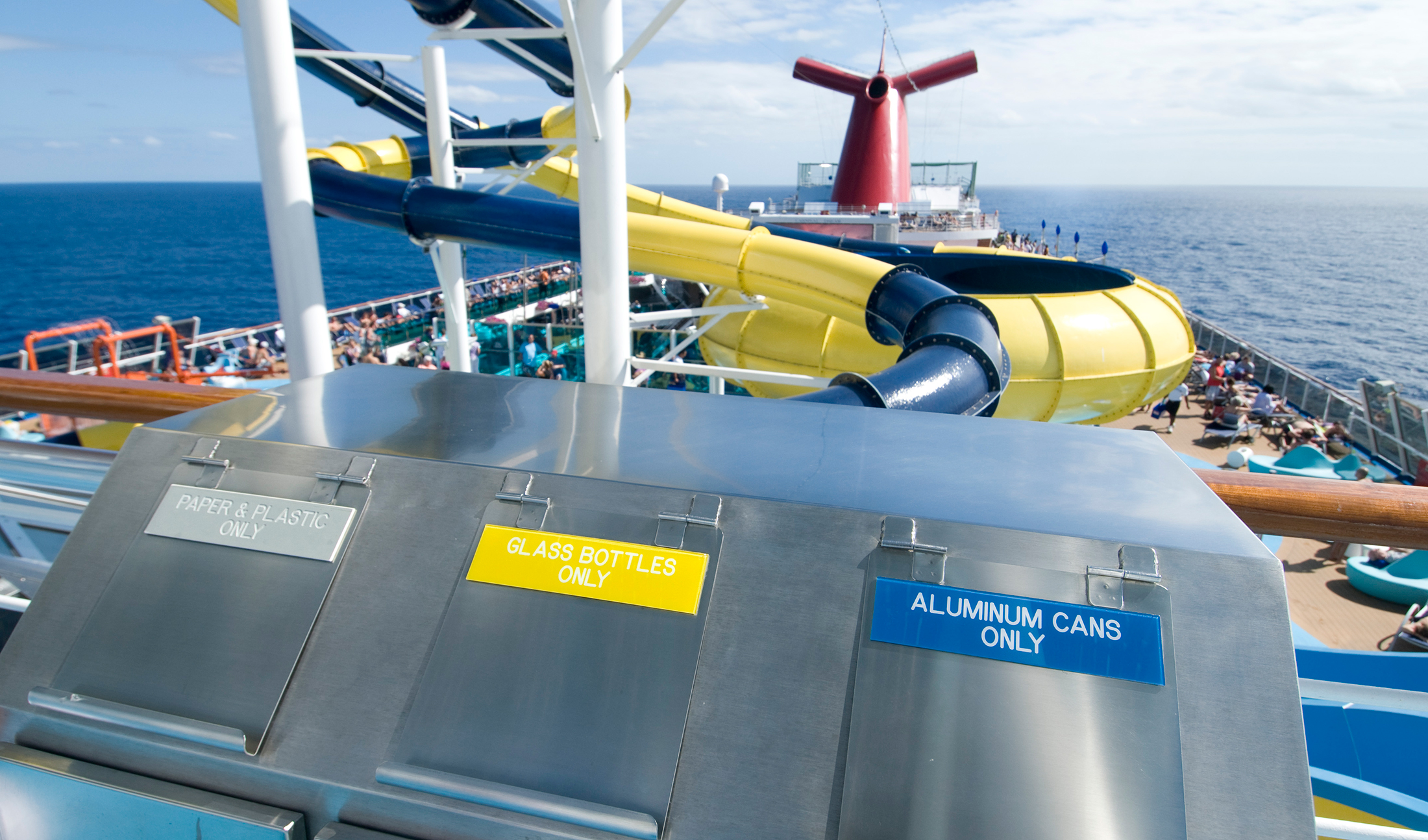
A recycling system on one of Carnival Corporation’s cruise ships. Each ship has its own environmental officer, who ensures the company’s eco-friendly guidelines are followed
A global corporate citizen
Carnival Corporation is a global corporate citizen and is entirely dependent on the health of the world’s oceans
Environmentally responsible travel is a high priority but nothing is more important than the safety of passengers and crew. Senior shipboard employees train in facilities with the most sophisticated technology used in the maritime industry to ensure they’re prepared for any challenge they face at sea. The company’s cruise lines also adhere to, and in some cases exceed, standards set out in the International Safety Management Code, developed by the International Maritime Organization.
Carnival Corporation is a global corporate citizen and is entirely dependent on the health of the world’s oceans. Cruises use large quantities of fuel and electricity – For Carnival Corporation, responsible travel and looking for new technology to reduce energy consumption plays a key role in keeping environmental impact to a minimum. The company is designing new cruise ships with an energy-efficient hull to lower fuel consumption. Carnival Corporation has also invested $400m to pioneer exhaust gas cleaning systems being used for the first time in the restricted space found on cruise ships. The systems will enable Carnival Corporation to meet new regulations that place a cap on sulfur content of fuel oil at 0.1 percent, resulting in significantly reduced air emissions, as well as helping the company meet its environmental sustainability targets.
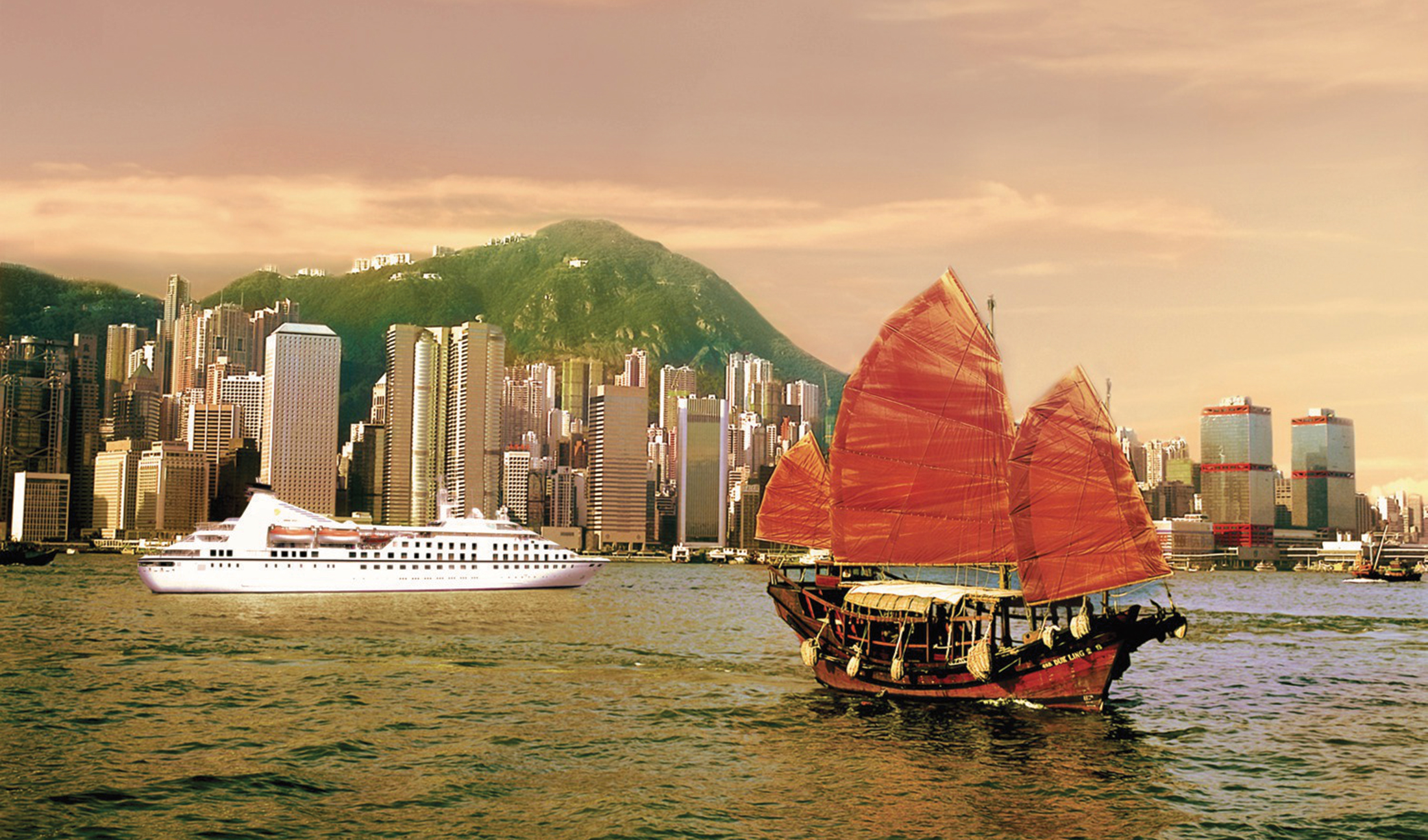
The Seabourn cruise ship in Hong Kong harbour. As well as being committed to environmentally responsible travel, Carnival Corporation does its utmost to promote travellers’ experiences
Developing a dedicated workforce that values an environmentally responsible travel ethos is a key objective. The company’s nine brands each have a unique culture based on the location of each operating line’s headquarters. Diversity is valued and promoted as the company clearly recognises that a heterogeneous workforce promotes tolerance and a positive work environment.
Strengthening stakeholder relationships by returning value is also critical to Carnival Corporation’s continued success. Well-thought-out governance policies advance environmentally responsible travel and ensure shareholder interests are represented. This has attracted respect and admiration from other interested parties.
Carnival Corporation’s founder, the late Ted Arison, was a strong advocate of environmentally responsible travel and philanthropy. Both are integral to the firm’s corporate culture, which recognises the inextricable link between healthy business and the sustainability of local communities. Each of Carnival Corporation’s operating lines and its employees support a variety of programmes providing aid, donations and services to an array of charitable organisations that touch many thousands of lives worldwide.
Every year the company voluntary publishes a sustainability report in accordance with the Global Reporting Initiative’s (GRI) guidelines. Progress of environmentally responsible travel policies and strategies around key sustainability topics are meticulously incorporated into a report that is shared with various stakeholders. In the interest of complete transparency, Carnival Corporation aligns its data-gathering to closely match GRI protocol. Within the report, Carnival Corporation addresses 58 performance indicators based on environmental, financial and social issues relevant to stakeholders.
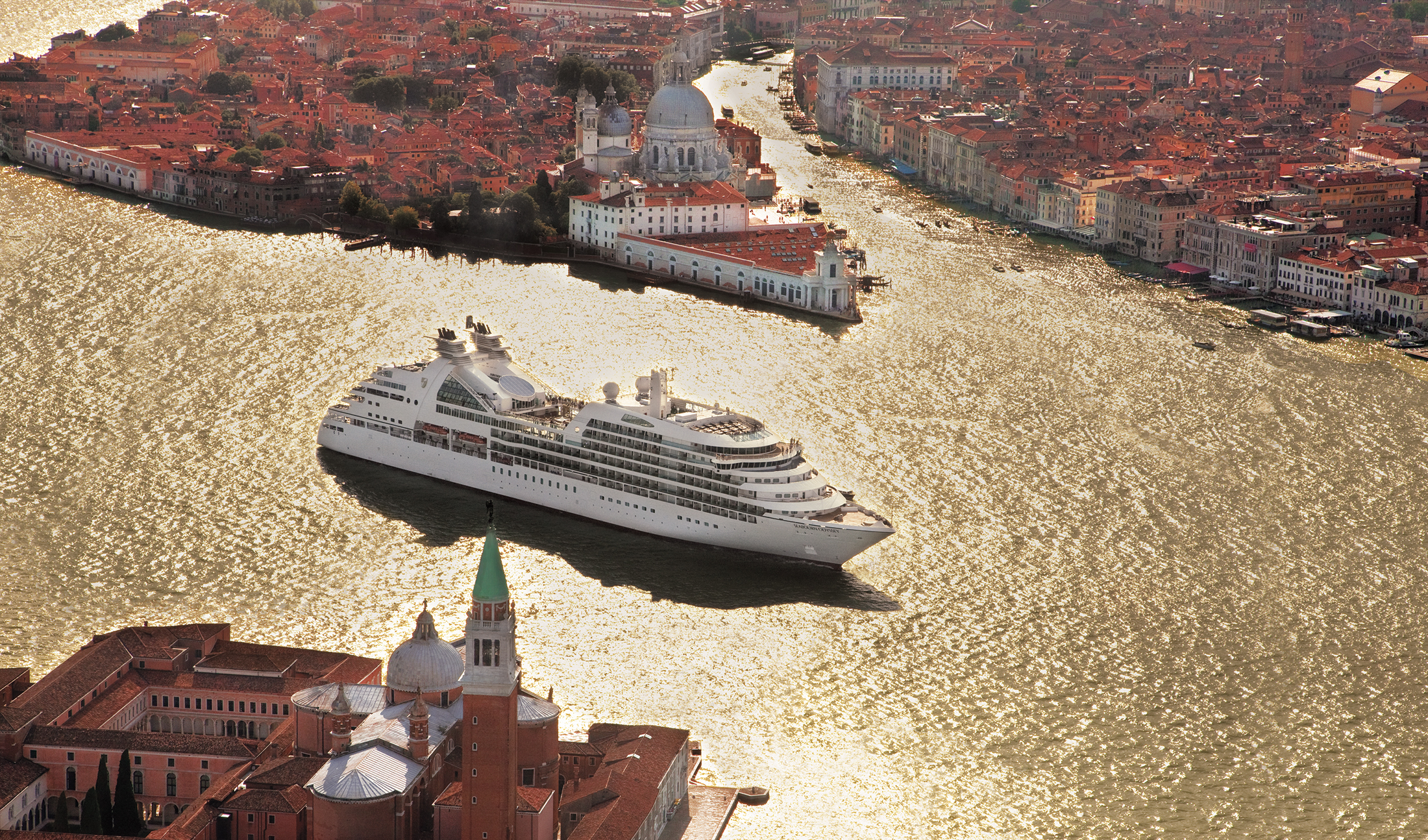
The Seabourn Odyssey – run by Seabourn Cruises – sails through Venice
Innovation
$400m
Amount Carnival Corporation has invested fitting its ships with ECO-EGC technology
24,000
The amount of megawatt hours of electricity purchased by Carnival Corporation in 2013 to connect to shore power
Carnival Corporation’s business model is tailored to support environmentally responsible travel. Cutting-edge technology is crucial to this approach as the cruise industry looks to improve efficiency and minimize the impact of carbon-based fuels. A host of technological equipment is in use to curb reliance on fuel and improve energy efficiency. MALS – or Mitsubishi Air Lubrication System – is one of the most innovative technology developments. Ships fitted with MALS are able to glide on a so-called air-bubble carpet, and expected to be able to save approximately seven percent of operating power. Two AIDA ships, currently being designed with energy-efficient hulls, will benefit from this air-bubble technology.
In 2013 The New Economy reported that the eco-friendly Carnival Corporation had begun equipping its vessels with Eco Exhaust Gas Cleaning (ECO-EGC) systems. The $400m investment will see at least 70 percent of the company’s fleet fitted with the technology that removes major pollutants from exhaust gases.
Carnival Corporation recently co-developed the LNG Hybrid Barge with Becker Marine. Essentially, it is a floating power station that can approximately reduce nitrogen oxide emissions by up to 80 percent and carbon dioxide emissions by 30 percent when compared to marine diesel with 0.1 percent sulphur. The barge allows cruise ships sailing to the German port of Hamburg to operate with low fuel emissions and is crucial to maintaining environmentally responsible travel while at port.
Another piece of cutting-edge technology that Carnival Corporation has advanced is “cold ironing.” This method lets ships plug into a centralised electrical grid at port where the infrastructure is available so they don’t need to use the ship’s electricity, therefore reducing fuel burned while in port. Carnival Corporation modified 20 of its ships at a cost of up to $2m each so they could connect to shore power. Since 2001 when the technology was implemented, the Princess Cruises’ fleet has made 1,309 connections and saved 80,000 megawatt hours of electricity.
All technical equipment on Carnival Corporation vessels use electricity – this requires fuel. From 2007 the company has made an effort to reduce fuel consumption with a number of changes, including optimising diesel generators at sea. This has enabled them to meet environmentally responsible travel targets by curbing fuel consumption and thus reducing carbon dioxide emissions.
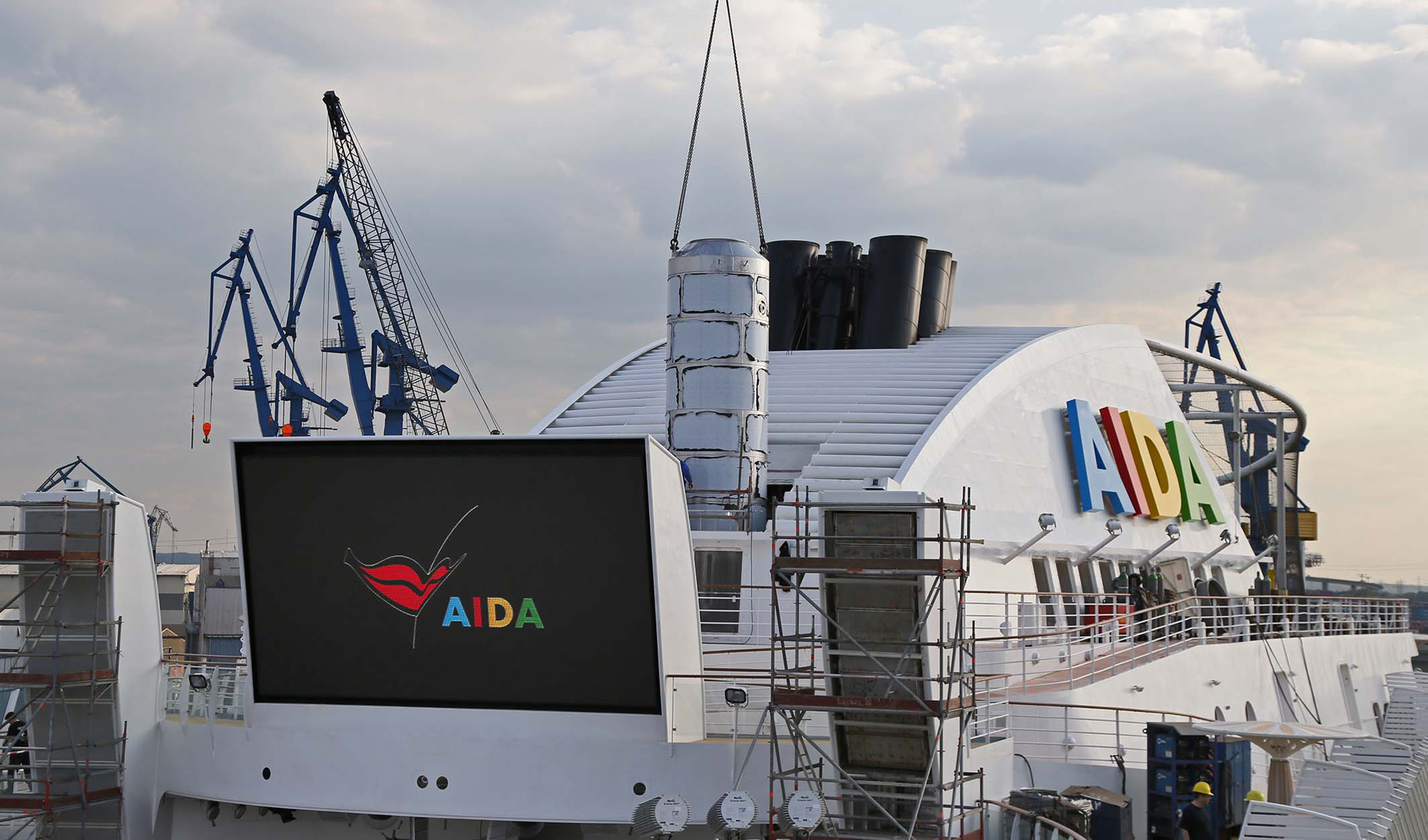
ECO-EGC technology being installed on an AIDA cruise ship
Key achievements
$100bn
Amount the cruise line industry generated for the global economy in 2013
775,000
Number of global jobs maintained by the cruise line industry in 2013
$1.5m
Amount Carnival donated to supporting victims of Typhoon Haiyan
For the last eight years Carnival Corporation has been included in the FTSE4Good Index, a socially responsible index for investors. It measures how companies adhere to well-known corporate responsibility standards amid growing demand for sustainable investment. The company has also been recognised by the Carbon Disclosure Project (CDP) for its transparency, particularly in relation to its GHG emissions and climate change disclosures. They’ve also been included in CDP’s Carbon Disclosure Leadership Index for five years. Carnival Corporation is ever-present in annual rankings of top green companies such as Maplecroft Climate Innovation Leaders Index, Newsweek Green Rankings, CR Magazine’s 100 Best Corporate Citizens and Southeastern Corporate Sustainability Rankings. All of the above is evidence of a company proud of its role as a corporate citizen and grateful for the global recognition on sustainable operations.
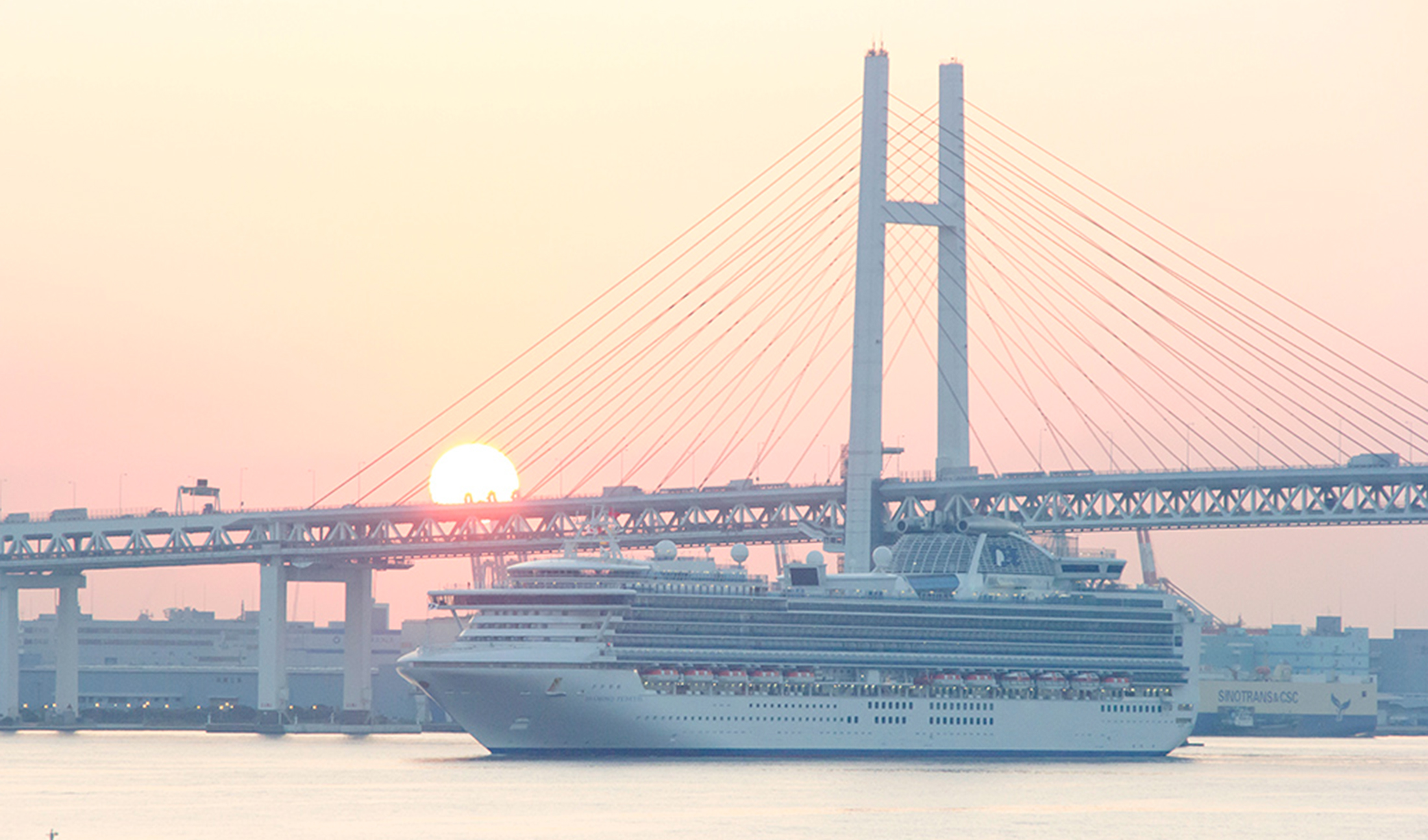
A Princess cruise ship takes to the ocean. Carnival Corporation and its brands have been internationally recognised for their attention to environmentally responsible travel
Carnival Corporation strives to make a positive impact in the communities in which it operates. Spending by Carnival Corporation, its guests and its crews generates employment, income and other economic benefits in these communities. In 2013, the cruise line industry generated $100bn in total economic activity for the US economy; during this time it also maintained 775,000 jobs around the world and brought about $33bn in global wages. Additionally, the cruise industry had a $42bn economic impact for the US, delivering $17.4bn in wages and 356,000 jobs.
Carnival Corporation also works to support local communities in their times of need. In 2013, Typhoon Haiyan deeply impacted the Philippines, and Carnival Corporation was compelled to help – the company’s ships operate in the area and it is also home to many of their crew members and families. The company, which is leading the industry into a new era of environmentally responsible travel, donated over $1.5m, which was distributed among various organisations such as UNICEF, Direct Relief, Save the Children, International Red Cross and the International Medical Corps.
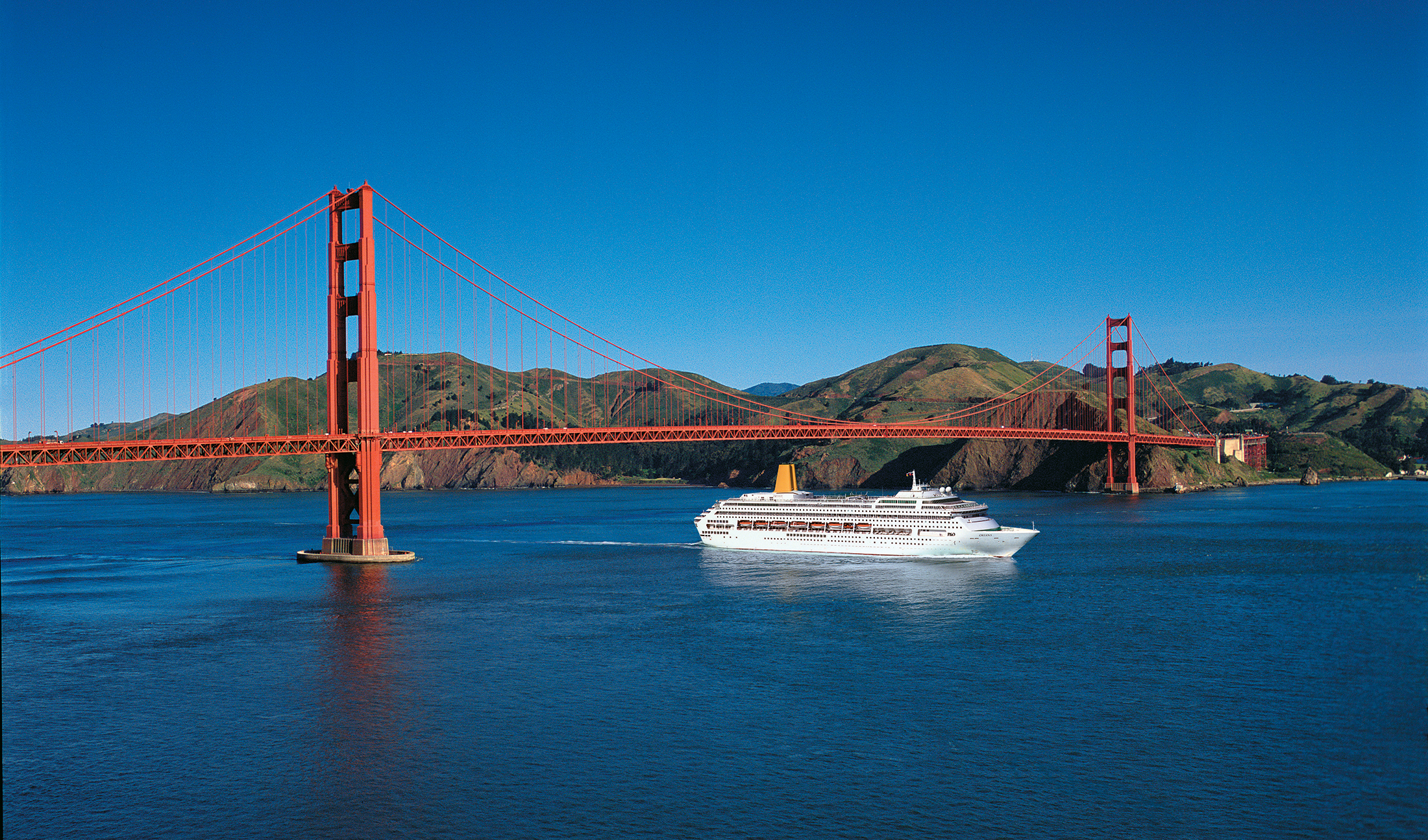
The P&O Oriana sails under the Golden Gate Bridge, San Francisco
